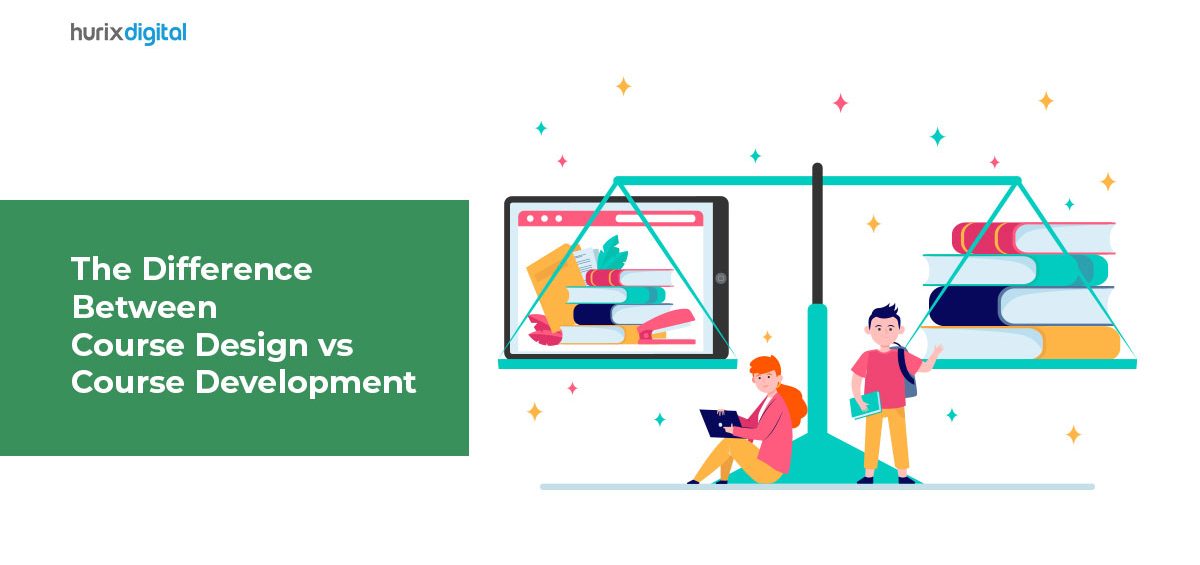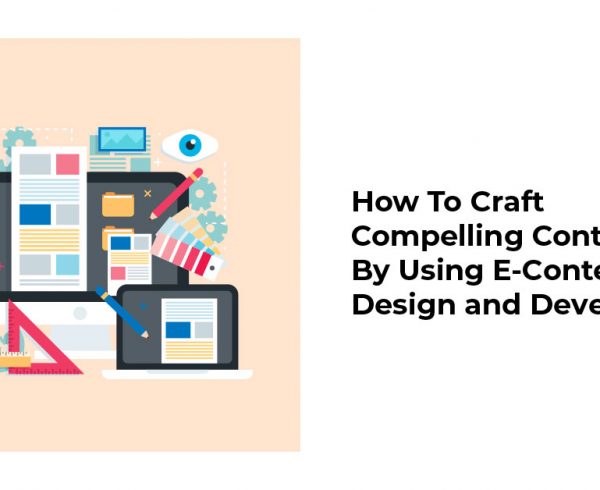Course design and development is an important part of the content-building workflow for publishers, corporates, and other entities. The subjects and outcomes may be diverse, but the process is similar to building a high-quality product.
The demand for high-quality content is very growing as consumer expectations grow. In 2021, the global eLearning market size was valued at $210.1 billion. Growing at a compound annual growth rate of 17.54% to grow to $848.12 billion by 2030.
At the same time, the number of players vying for market share is growing. Hence, putting the right e-content design and development process in place is a top priority for content publishers. Such as process must facilitate the seamless churning out of high-quality content in an efficient, sustainable, and scalable manner.
Table of Contents:
- What Is E-Content Design And Development?
- How Learner Aspirations Have Evolved
- Course Design vs Course Development
- Key Skills Needed for Course Design & Course Development
- Technology Requirements for Digital Course Design & Development
- Conclusion
What Is E-Content Design And Development?
The process used to conceptualize and create e-content or electronic content is called e-content design and development. Within e-content, one of the fastest-growing categories is e-learning.
Learners can range from across the educational hierarchy, corporate learners, and part-time learners looking for engaging courses in their area of interest. With over 6.8 billion using smartphones in the world, there is a growing number of learners wanting to access courses via mobile. Hence, the relevance of e-content quality has also shot up.
How Learner Aspirations Have Evolved
Learner expectations have also evolved. More learners aspire to learn via mobiles anytime, anywhere. Learners also want more engagement with learning content. Rather than learn merely through text and images, they want to learn to serve relevant purposes.
For instance, learning must be accessible to learners with limitations and facing barriers. They also want e-learning modules to break down concepts through the use of visual, audio, and interactive learning modules.
This is where superior investments in online program development can drive shifts. K12 publishers, for instance, will need to elevate the quality of instructional design in higher education to achieve these results.
Hence, e-Content creators must pay more attention to two key aspects – course design and course development.
Course Design vs Course Development
Many creators of e-content get confused between course design and course development. Though they sound similar, they play very different roles in the workflow and require diverse skill sets.
Here is a snapshot of the key differences between course design and course development.
The Concept
Within the workflow, course design comes first. This is a process, which involves ideation of the program, doing research about existing programs, setting goals, and also setting criteria for program outcomes. Educational program design is an extremely important step and foundation of the project.
Once these basics have been established, the next phase – course development – kicks off. Course development is an execution-heavy process that requires a very different set of skills to power it. This process includes creating content for the entire course and bringing various modules to life.
The Process
The process itself is very different for both stages.
For instance, in the research phase of course design, the lead will identify a gap that needs to be filled through courses. They will delve deeper into audiences’ needs and how they can be better served through content.
Course design leads must also understand the challenges and limitations of audiences so that the course can be effective. They will need to clearly identify the objectives of the course and also determine how the success of the course will be measured.
On the other hand, course development requires developers to understand what kind of technologies, learning formats, and design flows can make learning more effective. They will need to flesh out the curriculum extensively and painstakingly produce the final product, which can easily be accessed and distributed.
Key Skills Needed for Course Design & Course Development
Course design and course development demand unique skills. Here is a snapshot of the core skills required for both processes:
Course Design
- Domain knowledge: Course designers or instructional designers can benefit from having some domain knowledge in the subject connected to the course. They need not be experts.
- Research: Stellar research abilities can help course designers identify gaps and need in the market and the approach to learning. They must be able to sift through data and leverage it to build courses. They must have a clear idea of how to structure online courses for them to stand out from the clutter.
- Problem-solving: Addressing current learning gaps through creative problem-solving is useful for instructional designers.
- Project management: Course designers need to engage with multiple stakeholders – from developers and curriculum providers to management.
Course Development
- Tech skills: With e-content becoming much more engaging and interactive, projects need developers with a wide range of technical skills. The technical staff builds the software and interfaces required to make content consumable and accessible.
- Domain skills: Subject knowledge is a key aspect of helping ensure that the course material is authentic and there are no errors in content.
- Soft skills collaborators will need to possess collaborative and communication skills. They must leverage communication skills to stay connected and function as a team. Accountability is also an important aspect of this journey.
Technology Requirements for Digital Course Design & Development
Digital content design and development require the right tools to make it an efficient process. Businesses now have access to superior digital publishing suites that are custom-designed for such a need.
- Content designers and creators can easily bring their vision to fruition, especially when it involves multi-media content. Such platforms support embedding video, audio, infographics, and interactive elements.
- At every step of the way, publishers have access to superior data analytics and insights that can help them design courses that are more relevant to a contemporary audience.
- Digital rights management tools can be leveraged to deliver access only to authorized users, for instance, customers who buy or rent the content. This feature helps prevent plagiarism and loss of revenues. The need is so dire that the global digital rights management market is expected to grow from $4.3 billion in 2022 to $7.9 billion in 2027.
- The entire process can be managed from a single, unified, cloud-based platform, which connects multiple collaborators, and makes access to raw content and finished products easily accessible 24/7.
Conclusion
Clearly demarcating the educational program design and development stages will help businesses outline the right timelines, skill sets, and processes for their content-building strategies. Having access to the right tech-enabled tools to power the e-content design and development is also key to optimizing the process.
This is where access to superior digital publishing platforms can offer businesses an intuitive, single, unified platform to help streamline all their efforts to produce and securely distribute high-quality content at scale.
Suppose your business wants to create, publish and distribute high-quality learning courses. In that case, Hurix Digital will support you in meeting all your company’s content design and development needs. Our state-of-the-art digital publishing platform is available as a licensed version (one-time buy) and via a subscription model.
Also Read – 10 Best Practices for Effective Online Course Development







